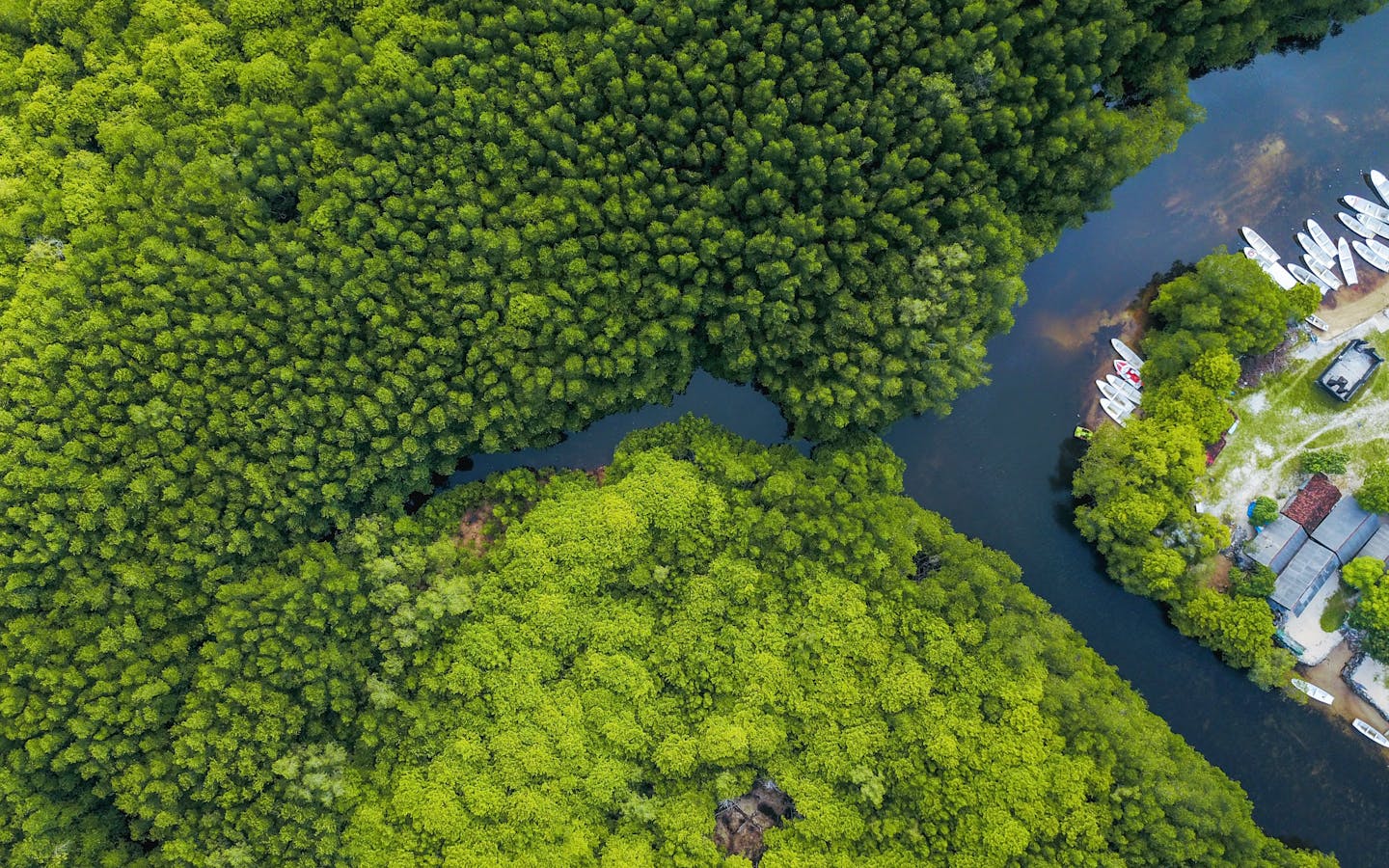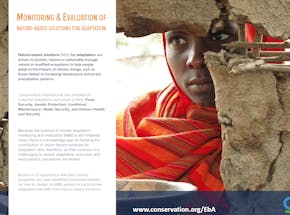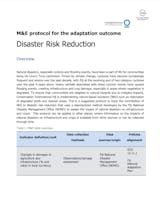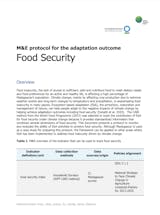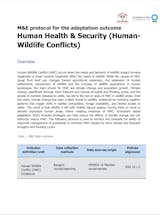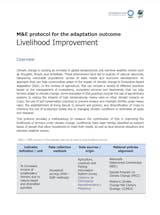Even if the world stopped all carbon emissions immediately, the impacts of climate breakdown would continue for centuries. Humanity must scale up methods for adapting to climate change.
One promising approach is called Ecosystem-based Adaptation (EbA): the use of nature — conservation, restoration and sustainable management of ecosystems and biodiversity — to address climate impacts on people and livelihoods. Examples of EbA include rangeland restoration to bolster water supply to local communities and livestock during droughts; the implementation of agroforestry to protect crops negatively affected by extreme temperatures; and mangrove restoration to protect coastal communities from storm surge, among others. Despite its potential, EbA approaches receive less than 2% of global funding aimed at addressing climate change.
Conservation International is advancing the science of EbA and working with governments and businesses to turn nature into our greatest ally to reduce the impacts of climate change. Our general approach is to contribute to a more holistic climate and biodiversity agenda by implementing EbA that generates multiple benefits, including climate justice and equity.
Our current work

Understanding the role of nature for climate adaptation
There is strong evidence that EbA can help people, and ecosystems themselves, adapt to climate change. And though many scientific studies support this assertion, something remains uncertain: the magnitude of the role ecosystems can play in climate adaptation. This uncertainty is a key barrier that limits the use and scaling of EbA. Given the urgency to address climate change, this barrier needs to be eliminated so that adaptation-focused nature-based solutions, from ecosystem conservation to restoration, can be deployed quickly and widely.
We are a) quantifying, at the global level, the number of people who are highly vulnerable to a variety of climate impacts (e.g., droughts, floods, coastal erosion, wildfires) using future climate projections; b) calculating how many highly vulnerable people could have their vulnerabilities reduced through the implementation of EbA; c) identify priority areas for the protection, restoration, and management of ecosystems that are critical for climate adaptation. This research will identify areas where adaptation is most needed and where nature has a critical role in helping people adapt to climate change.

Implementing transformative adaptation
Transformative adaptation refers to actions that lead to fundamental shifts in states and interactions of people and nature while addressing root causes of vulnerability in the long term. Transformative adaptation is more anticipatory than other climate change responses, such as coping or incremental responses. The more transformative the adaptation strategy, the higher the human inputs and re-organization required — along with significant investments of time, money and skills.
EbA actions are transformative when part of an integrated approach that fully takes into consideration best practices and future changes. They can reshape unsustainable interactions between people and nature, while moving beyond immediate material benefits or current development pathways.
We have incorporating the concept of transformative adaptation into our EbA actions, including projects in Madagascar, Kenya, Colombia, Mexico, South Africa and Philippines.
Monitoring and evaluating the impacts of EbA
Monitoring and evaluation are essential for assessing the effectiveness, costs and co-benefits of EbA actions. Conservation International has identified adaptation outcomes that can be achieved through EbA, such as reduced damages to coastal communities and infrastructure due to extreme weather events, and reduced impacts of climate change on water quality and quantity, as well as indicators for measuring those outcomes.
The project ‘The Sustainable Landscape in Eastern Madagascar,’ funded by the Green Climate Fund, aims to improve the resilience of climate-vulnerable smallholder farmers by implementing EbA actions. We implemented a robust impact evaluation to understand the impacts of implementing climate-smart agriculture and more sustainable forest management in reducing the vulnerability and food insecurity of smallholder farmers. The evaluation shows widespread adoption of conservation agriculture practices. Most importantly, the midline evaluation shows an improvement in food security status for households that received the project benefits, as well as a reduction in households’ reliance on forest resources.
The project ‘Restoring nature and peace threatened by climate change: monitoring human security benefits of EbA in Kenya’, supported by the Global EbA Fund aimed to demonstrate the connections between grassland restoration and human-wildlife conflicts and social conflicts. We built on an existing project, funded by Apple, which is restoring 11,000 hectares of rangelands, to assess whether restoration activities impact conflicts. We collected information on conflicts using household surveys implemented in Chyulu Hills, Kenya, over 13 months when grassland restoration was also implemented. 88.9% of the households interviewed experienced human-wildlife conflicts, and 32% experienced social conflicts. There was a negative and significant correlation between the area restored in each site and both the number of human-wildlife conflicts and the number of social conflicts, showing that conflicts decrease as restoration increases. We also used time as a proxy for restoration, as the restored area, and restoration activities increased through time. We found an overall decrease in social conflicts over time, as well as a reduction in the feeling of insecurity. Households lead by men experienced more human-wildlife conflicts, compared to households led by women, and implemented more strategies to deal with human-wildlife conflicts than women. In contrast, households led by women experienced more social conflicts but did not implement more mitigation strategies. Based on those results, our recommendations are: 1) to continue tracking conflicts in Chyulu Hills to understand the connections between grassland restoration and conflicts in the long-term, 2) to identify measures to mitigate human-wildlife conflicts considering the multiple conflict-causing species, 3) to address social conflicts in households led by women, 4) to strongly consider the needs, perceptions and interests of women while designing strategies to mitigate conflicts, and 5) to scale-up and to coordinate, in time and space, restoration interventions to potentially reduce human-wildlife conflicts.
The project ‘Ecosystem-based adaptation and mitigation in Botswana’s Communal Rangelands’, supported by the Green Climate Fund, aims to restore vegetation in communal grazing lands that are particularly impacted by climate change. The restoration and management of grazing vegetation will increase the amount of moisture held by the soil. This will make cattle- raising, and consequently pastoralists, more resilient to drought, while at the same time enhancing soil carbon and reducing greenhouse gas emissions. We are implementing an impact evaluation to assess the climate adaptation benefits of rangeland restoration and management.

Supporting EbA policy
Conservation International is helping shape regional and national climate change adaptation policies and national adaptation planning, so that they include EbA in reducing climate change impacts that substitute or complement hard infrastructure actions. Through engagement with international policy forums, lessons from our experiences are also informing global dialogue on EbA, influencing how EbA is implemented worldwide.

Unlocking new adaptation finance streams
Conservation International will create new adaptation financial models and promote their inclusion in public and private-sector investment strategies. For example, we will evaluate the chance to bring down insurance claims by reducing the risk of coastal flooding through mangrove conservation and restoration (e.g., the Restoration Insurance Service Company, or RISCO, which was developed by our Conservation Finance Division) and identify other types of incentives appropriate for the areas where climate adaptation is most needed.
Materials
Peer-reviewed publications
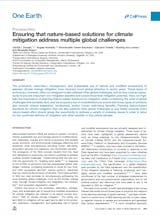
Ensuring that nature-based solutions for climate mitigation address multiple global challenges
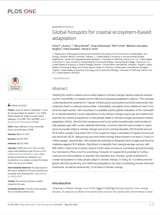
Global hotspots for coastal ecosystem-based adaptation
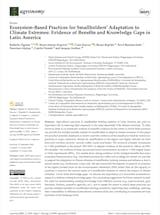
Ecosystem-Based Practices for Smallholders’ Adaptation to Climate Extremes: Evidence of Benefits and Knowledge Gaps in Latin America
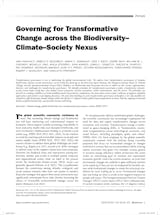
Governing for Transformative Change across the Biodiversity– Climate–Society Nexus
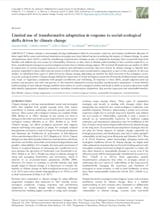
Limited use of transformative adaptation in response to social-ecological shifts driven by climate change
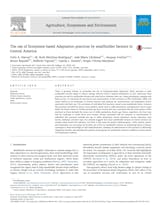
The use of Ecosystem-based Adaptation practices by smallholder farmers in Central America
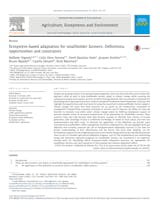
Ecosystem-based adaptation for smallholder farmers: Definitions, opportunities and constraints
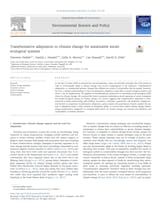
Transformative adaptation to climate change for sustainable social-ecological systems
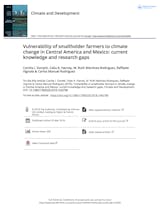
Vulnerability of smallholder farmers to climate change in Central America and Mexico: current knowledge and research gaps
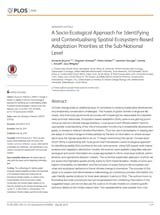
A Socio-Ecological Approach for Identifying and Contextualising Spatial Ecosystem-Based Adaptation Priorities at the Sub-National Level
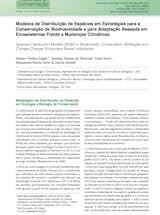
Species Distribution Models (SDM) in Biodiversity Conservation Strategies and Climate Change Ecosystem Based Adaptation
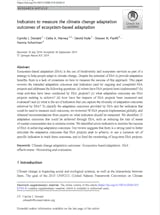
Indicators to measure the climate change adaptation outcomes of ecosystem-based adaptation
Policy and technical briefs
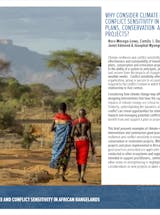
Why Consider Climate Resilience and Conflict Sensitivity in Management Plans, Conservation and Restoration Projects?
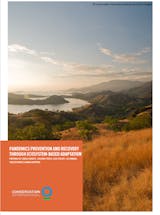
Pandemics Prevention and Recovery Through Ecosystem-based Adaptation
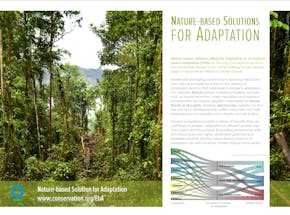
Nature-Based Solutions for Adaptation
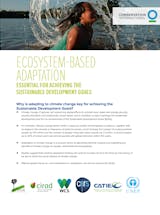
Ecosystem-based Adaptation is essential for achieving the Sustainable Development Goals
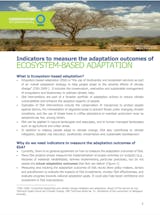
Indicators to measure the adaptation outcomes of Ecosystem-based adaptation
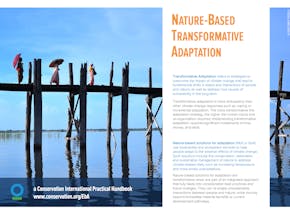
Nature-based transformative adaptation
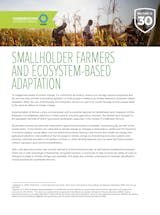
Smallholder Farmers and Ecosystem-based Adaptation
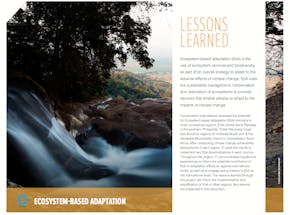
Lessons learned: Ecosystem based adaptation in marine, terrestrial and coastal regions
Training modules and guidelines

EbA Household Survey Tool
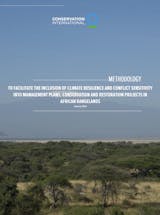
Methodology to Facilitate the Inclusion of Climate Resiliency and Conflict Sensitivity Into Management Plans and Restoration Projects in African Rangelands - Jan. 2024

Questionnaire: Methodology to Facilitate the Inclusion of Climate Resiliency and Conflict Sensitivity Into Management Plans and Restoration Projects in African Rangelands - Jan. 2024
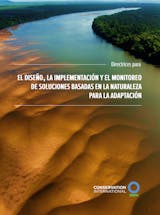
Directrices Para el Diseño, la Implementación y el Monitoreo de Soluciones Basadas en la Naturaleza Para la Adaptación
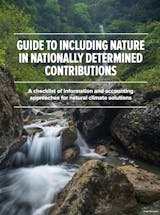
Guide to Including Nature in Nationally Determined Contributions
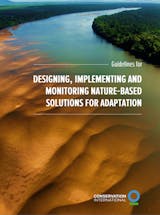
Guidelines for Designing, Implementing and Monitoring Nature-Based Solutions for Adaptation
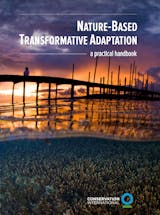
Nature-based transformative adaptation — a practical handbook
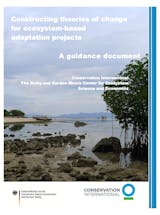
Constructing theories of change for ecosystem-based adaptation projects
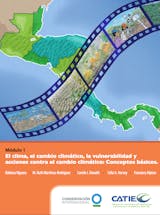
Climate change, vulnerability and actions to combat climate change: basic concepts (El clima, el cambio climático, la vulnerabilidad y acciones contra el cambio climático: Conceptos básicos)
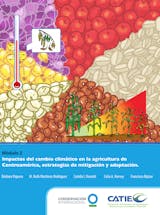
Impacts of climate change on agriculture in Central America: adaptation and mitigation strategies (Impactos del cambio climático en la agricultura de Centroamérica, estrategias de mitigación y adaptación)
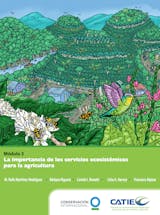
The importance of ecosystem services for agriculture (La importancia de los servicios ecosistémicos para la agricultura)
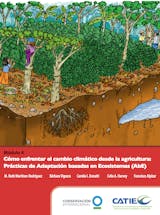
How to address climate change in agricultural systems: Ecosystem-based Adaptation Practices (Cómo enfrentar el cambio climático desde la agricultura: Prácticas de Adaptación basadas en Ecosistemas)
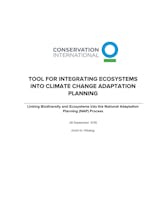
Tool for integrating ecosystems into climate change adaptation planning
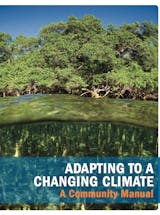
Adapting to a changing climate — a community manual
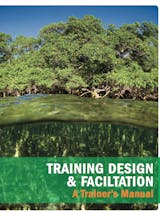
Adapting to a changing climate — Training Design/Facilitation
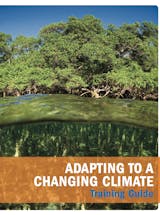
Adapting to a changing climate — training guide
Monitoring and evaluation of EbA
Vulnerability assessments
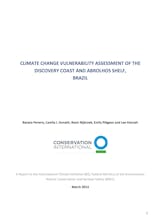
Climate Change Vulnerability Assessment of the Discovery Coast and Abrolhos Shelf, Brazil
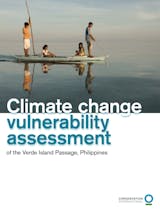
Climate change vulnerability assessment of the Verde Island Passage, Philippines
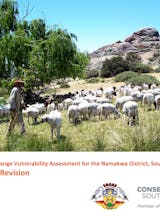
A Climate Change Vulnerability Assessment for the Namakwa District, South Africa - The 2015 Revision
Related conservation news from our blog
Contact
Camila Donatti, PhD.
Senior Director, Climate Change Adaptation
cdonatti@conservation.org
Giacomo Fedele, PhD.
Climate Adaptation Director
gfedele@conservation.org
